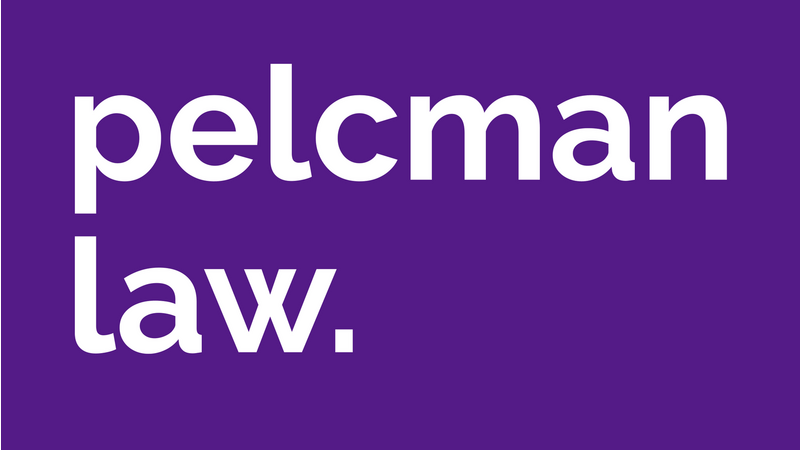Role of Trademarks in Brand Protection
- Lukas Pelcman

- Feb 6, 2023
- 6 min read
Updated: Feb 14, 2024
Together with the product or service and the sales vector, the brand represents the heart of a successful business. Protecting it, like protecting the product itself, must therefore be taken seriously. There are many ways to protect your brand. I discuss how each method differs from the other, their specifics, and more in a series of articles dedicated to the topic of brand protection.
In this article, I briefly introduce trademarks and their key characteristics as a popular and effective tool for brand protection.
The basis for effective brand protection
Traditional and reliable method of brand protection is trademark registration. A trademark means the right of the right holder (the owner) to use the protected sign in principle freely and at the same time to prevent others from using the same sign in their own activities (of course, there are some exceptions, which I discuss in another post in this series).
Types of trademarks
It is worth noting that it is mainly word or figurative signs that can be registered (in addition, there are more exotic marks, such as sound marks, spatial marks, etc.).
Word marks do not protect any particular graphic design. This means that if a third party registers or starts to use a logo that is similar to yours without incorporating a word element protected by a registered word mark or other similar element, then it is not possible to defend against such a person on the basis of the word mark (this is a simplified view – protection is possible in principle even in such cases, but not on the basis of the mark in question, but with reference to unfair competition law or with reference to the right to an unregistered sign – I discuss these possibilities further in another post in this series).
Figurative marks, on the other hand, are strongly linked to a particular graphic representation. This means that if the logo changes, the protection afforded by the relevant trade mark may be weakened in relation to the new graphic design of the logo. If the new logo differs significantly from the version protected by the trade mark, a third party may theoretically seek revocation of such trade mark relating to the outdated version of the logo. In such a case, however, there would indeed have to be two essentially different signs.
If the figurative mark also contains a verbal element, then both that verbal element and the graphic representation are protected. Such marks were formerly referred to as combined marks. However, protection in relation to the purely verbal element within the whole sign is not as strong as in the case of a word mark. The assessment of whether an infringement of a ‚combined‘ mark also occurs will depend on the particular circumstances of each case and in particular on what is the dominant element of the protected sign.
In view of the above specifics of word and figurative marks, registration of both types may be recommended for comprehensive protection of both the word sign and the graphic representation of the logo used.
Territorial restrictions
Trademarks are always registered in relation to a specific territory. There is no such thing as a worldwide trademark. The closest thing to this is the European Union trade mark (EUTM), which provides protection in all EU member states. In other cases, it is usually necessary to secure a trade mark for each country separately. With this in mind, it is advisable to register a trade mark for all territories where you are carrying on or plan to carry on any business.
In an effort to make the registration process easier for trademark owners, the World Intellectual Property Organization (WIPO) offers an „international application form“ that allows multiple registrations of individual national trademarks to be processed in one place. The international application can be used in relation to countries that are signatories to the Madrid Agreement Concerning the International Registration of Marks (or Madrid Protocol). While it is still necessary for all trademarks so registered to go through a national registration procedure, the international application at least gives the possibility to use a single application to register a bundle of national trademarks.
It is always possible to base an international application on a particular national application, with which the international application stands and falls in principle. In view of this, it may therefore be advisable to base an international application on a national trade mark which is not at high risk of being declared invalid or revoked. The choice of this initial national trade mark is a matter of strategy for the owner.
Range of protected goods and services
Just as trade marks are always registered in relation to a specific territory, they are also registered only in relation to a specific range of goods and services – that is, the range of goods or services in relation to which the proprietor of the trade mark uses the protected sign. A trade mark does not provide protection for a registered sign outside a selected set of goods and services, or outside a selected set of goods and services and goods and services similar to those selected.
The list of goods and services must be drawn up with regard to the specific intended use of the trade mark. At the international level, there is a catalogue of a total of 45 classes of goods and services from which to choose when compiling such a list.
Among other things, the overall assessment of whether there is a likelihood of confusion between the two signs depends on the assessment of the similarity of the goods or services selected to those for which the conflicting sign is used by a third party. (In order to conclude whether there is a likelihood of confusion in a given case, in addition to the similarity of the goods and services, it is also necessary to establish the similarity of the two signs – these are prerequisites for concluding that there is a likelihood of confusion between the two signs and therefore also for concluding that the trade mark has been infringed – if one of the prerequisites is absent, it is not possible to accept this conclusion; at the same time, however, it does not necessarily follow that there is a likelihood of confusion if both prerequisites are met – for this, the matter must then be assessed again taking into account the specifics of the case).
Nature of the trade marks
Trademarks are generally intangible things (in Czech law terminology, things in the legal sense). A person who registers a trademark becomes its owner and may subsequently dispose of it in much the same way as any other thing – e.g. sell, donate, license, etc.
The owner of a trademark may use the ® symbol in connection with the trademark. It is not an obligation, but if the symbol is included with a protected sign, it sends a clear signal to third parties that the sign is protected by the trademark. (This symbol is not to be confused with another symbol: © – copyright – which represents an informal reservation of copyright in a work and operates in a similar way with respect to copyrighted works.)
Registration procedure
The whole process starts with filing a trademark application. The competent office then carries out a so-called formal examination of the registrability – i.e. it checks that the sign or logo to be registered is registrable with regard to the general rules set out in the legislation (e.g. the sign is not descriptive, it is distinctive, it is not contrary to public policy or good morals, etc.).
Once the application has been filed and the relevant fee has been paid, which varies depending on the territory, the 3-month time limit for opposition by third parties on the basis of similar trade marks usually starts to run. Oppositions can generally be filed on the basis of an earlier national trade mark valid in the territory for which the contested application is registered. However, this does not apply in the case of an EU trade mark. Oppositions can also be filed on the basis of any earlier trade mark that is protected in even one country of the European Union. (For example, if a person has a registered trade mark for Germany only, it is possible to oppose an EU trade mark application purely on the basis of that national trade mark. In the case of a Czech trade mark, opposition can only be filed on the basis of another Czech or EU trade mark.)
If an opposition is filed during the registration of a trade mark, the opposition procedure usually lasts about 6-8 months and at the end of the procedure, either a (partial) refusal to register the filed trade mark or a rejection of the opposition and the registration of the trade mark may occur. Depending on whether oppositions have been filed in the trademark registration procedure, the whole procedure can take place within months from the publication of the application to several years.
What are the costs?
The costs of registering a trade mark vary depending on the territory and the number of classes of goods and services designated for the trade mark. The fee for registering an EU trade mark for three classes of goods and services is EUR 1,050 and for a Czech trade mark it is CZK 5,000. There is an additional fee for each class of goods and services and this fee varies according to the territory. The cost of an international application is determined according to the WIPO price list also according to the designed countries.
This is the first article in a series of posts on trademark protection. The second post on the relationship between domain names and trademarks can be read here and the third post on the limits of protection afforded by a trademark is available here.





Comments